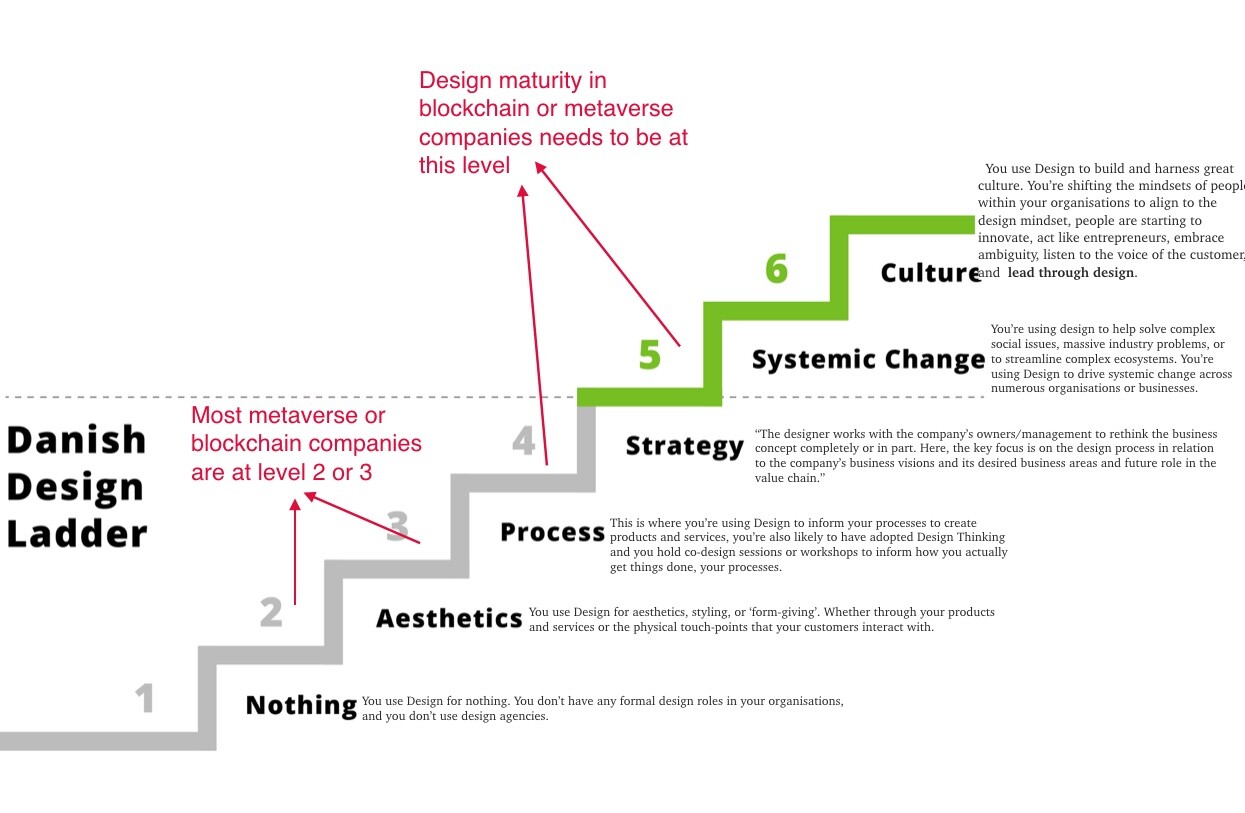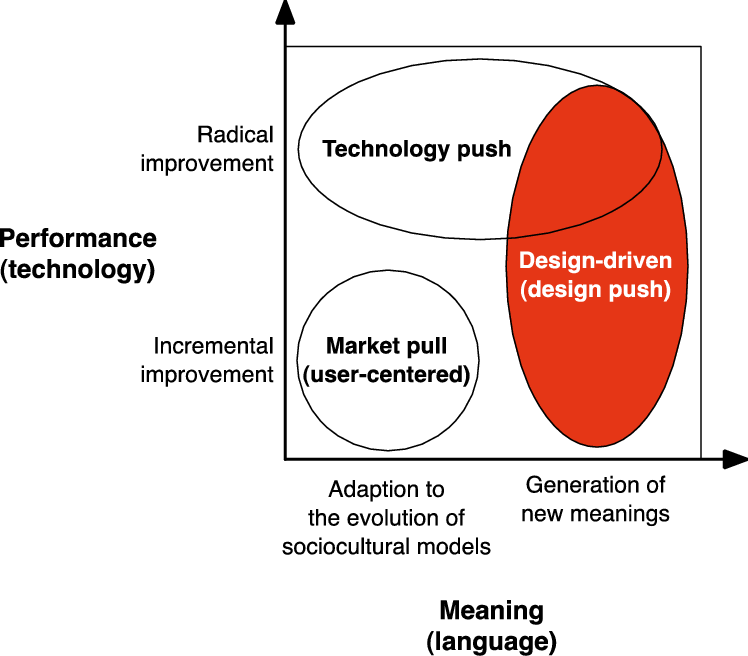
A few years ago in Paris, we ran a series of in-depth user-research interviews with some elderly people as part of a project to design smart products for them. “They remind me of my age,” said one of the interviewees when we asked them about their experience with everyday pieces of technology. “We want to feel like everyone [else],” she added.
If you feel old and alienated when you use a piece of technology, it’s because it’s not designed well enough. Technology is supposed to provide a seamless experience, as much as it allows.
When I read a LinkedIn post by Anne-Christine Polet called “Maybe I’m too old” about her experience with digital fashion week on Decentraland, the first thing that came to mind was the older people in Paris.
We all know that the current user experience or service ideas of blockchain and the metaverse services is almost terrible (for sure there are exceptions). The companies that operate in these realms have already created a culture where it seems as if only the young or techy people are welcome. How young should you be to use a technology product? Why are these ideas in metaverse or blockchain services copies of web2?

Figure 1: Quotes from the LinkedIn post
The comments under Polet’s post offer great insight for user research into understanding people’s experience with the metaverse platform. I must say, I also hear similar comments about blockchain services. Most of the commenters point out that they feel alienated, missing out and being too old.
Founders of companies using the metaverse or blockchain have a completely different vision for society than the founders of web2, thanks to the logic behind these technologies. However, they need to have a shift of mindset in their user experience agenda, on top of their technology and governance agendas, as they aren’t building another web2 company. They build completely new narratives than the narratives of web2. They should move from user experience mainly defined with wireframe level design understanding and go deeper down to semantic level and build their narrative, strategy and experience from there. This can be achieved with strategic design.
This does not mean that web2 companies should only embrace wireframe-level design understanding. The strategic design would also transform web2 companies’ user experience substantially. However, for web3 or specifically blockchain and metaverse companies, it is a requirement as they promise a new narrative that the people haven’t experienced before
Current situation
In blockchain or metaverse companies, smart-level contracts, wireframe-level user experience and 3d design are prioritized. Although these are all valid concerns and good to prioritize, nothing stops them from also going deeper in the user experience and position it at a strategic level.
A wireframe-level user experience might work very early in the beginning but it will fail dramatically in the long term because as Anne-Christine and Jared Jay Jerotz perfectly described they couldn’t make sense of scenarios, actions and the product itself, as there is simply a missing link between the technology and people. Strategic design builds that link.
Here are some basic recommendations on how you can overcome this issue.
1 – If you propose a societal shift of mindset, don’t copy your mindset from web2:
The Danish design ladder (figure 2) shows design maturity in a company. If you check blockchain companies, most of the design job profiles are at level two or three, as they mostly expect visuals or wireframes. If you are building a web2 company, this might work at a certain level. However, since in metaverse and blockchain, you are building something completely new in every sense, you need to increase the design weight in the company and go to level four or five to improve user experience.

Figure 2: Extended Danish Design Ladder from Bryan Hoedemaeckers medium article
This is for several reasons. First, users have never been this powerful, and ownership has never been this clearly assigned to individuals. Therefore, if they hate your “web3 of Facebook”, they and their networks will leave thanks to potential interoperability features.
Secondly, blockchain, or even metaverse applications, propose a systemic change in society. So the experience they provide cannot mimic web2 experiences or in-person experiences and environments. This would be a similar mistake that was made in early the 2000s by copying TV content and applications for mobile.
If you are convinced that your web3 company brings a new mindset, then this requires some semantic level thinking, which can be done by your strategic designers.
Experience design should be in the centre of product development even at early stages of ideation.
2. For user experience in metaverse or blockchain products, the key phrase is strategic design
The experience of designing, even in the very early stages, should involve designers with the right skills. Seeing everything only from a 3D design or wireframe perspective and overlooking people’s end-to-end experience is a mistake in user experience context.
The positioning of design, the design investments and the necessary skills should be on the strategic level and be much more advanced than what we have in web2.
Although design academic Verganti’s design-driven innovations have different methods and may not be the perfect fit for this article with a short explanation, I would like to still share it (figure 3) with you to show how design powerfully can be positioned along with technology to create new meanings for people as in the case for metaverse and blockchain applications.

Figure 2: Design-driven innovation by Roberto Verganti
But how do we do it in practice?
It is not your fault that design has so many different verticals (product design, UX design, service design, design thinking, graphic design, fashion design, interaction design, communication design, brand design, and so on) that can’t be clearly differentiated. This comes from the nature of design itself as nothing is black and white in the design context. There are always several ways of solving a problem.
To help you a bit further, 3D design, UX, wireframe design, graphic design, etc., are all strong design verticals but need to be positioned in a narrative that can be built under the strategic design umbrella. This means a designer who knows design thinking, service design and has experience in using user data to set strategies and experienced in design leadership where s/he is familiar with setting a design and brand vision for your company. This is not about seniority, this is about design skill sets.
All your decisions need to be based on user data, which may come from both qualitative and quantitative research done by designers, user researchers. Since in web3, we design a new narrative that people aren’t familiar with, qualitative research could be quite helpful.
What is user data? Read the quotations at the top of this post, which are all taken from the same thread. This is user data for Decentraland which should drive all their decisions. These quotes should be on their office walls, or be the wallpaper of their virtual Zoom backgrounds in their internal meetings.
3. Narrative for metaverse and blockhain companies
Companies that use the metaverse and blockchain want to change the world. They hope our relationship with money, spaces, networks, governance and data will be redefined. This means there is a powerful change in the narrative – something that all founders need to work hard on in these domains.
This is also the major gap that current blockchain and metaverse tech companies have between their products and their users. They need to invest in strategic design to fill this gap.
In summary, using basic level design in web2 to improve user experience cannot be replicated for metaverse and blockchain companies. There needs to be a radical shift for the practice of design in these emerging domains. This change is toward considerations of meaning – a semantic change*.
PS: If you think that your approach for user experience for your blockchain or metaverse project is advanced, please reach me on LinkedIn. I am happy to promote your case and also invite you to my classes at ESSEC Business School EMBA program.
*The semantic turn – Klaus Krippendorff
This article originally published on LinkedIN
